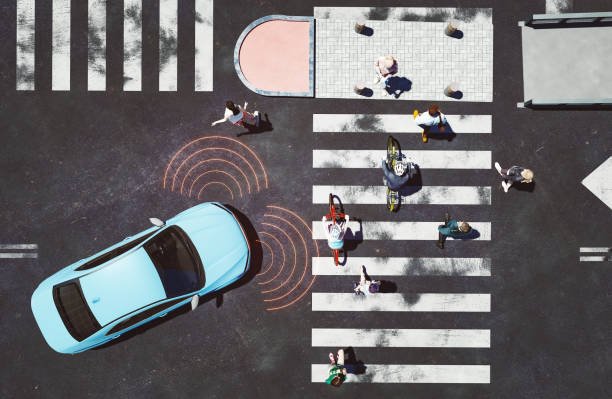Smart Eyes for Self-Driving Cars: The Future of LIDAR and Photonic Technology

Imagine it’s late at night, pitch dark, and a self-driving car is navigating a narrow country road. Suddenly, three hazards appear simultaneously. What happens next? Before the car can maneuver through this sudden barrage of obstacles, it must first detect them—gathering enough information about their size, shape, and position so its control algorithms can plot the safest course. With no human at the wheel, the car requires advanced sensors—smart eyes—that can accurately resolve these details in a split second, regardless of the environment, weather conditions, or darkness.
This is no small feat, but there’s a solution that combines two powerful technologies: LIDAR, a special laser-based probe, and integrated photonics, a miniature version of the communications technology that powers the internet. To understand LIDAR, it’s helpful to start with radar, a related technology. In aviation, radar antennas send out pulses of radio or microwaves to detect planes by measuring the time it takes for the beams to bounce back. However, radar’s large beam size limits its ability to visualize fine details.
In contrast, a self-driving car’s LIDAR system—Light Detection and Ranging—uses a narrow, invisible infrared laser that can image features as small as the button on a pedestrian’s shirt across the street. But how does it determine the shape or depth of these features? LIDAR fires a series of super-short laser pulses, which provide depth resolution. Take, for example, a moose on the road. As the car drives by, one LIDAR pulse might scatter off the base of its antlers, while the next might travel to the tip of an antler before bouncing back. By measuring the difference in time between the pulses, LIDAR can calculate the shape of the antler. With many such pulses, the system quickly renders a detailed profile.

The most straightforward way to create a light pulse is by switching a laser on and off. However, this method can make the laser unstable and affect the precise timing of its pulses, which limits depth resolution. A better approach is to leave the laser on and use another mechanism to block the light reliably and rapidly. This is where integrated photonics comes into play. The digital data of the internet is carried by precision-timed light pulses, some as short as a hundred picoseconds. One way to create these pulses is with a Mach-Zehnder modulator, a device that utilizes a property of waves known as interference.
Imagine dropping pebbles into a pond: as the ripples spread and overlap, a pattern forms. In some places, wave peaks add up to become larger; in others, they cancel out completely. The Mach-Zehnder modulator does something similar. It splits waves of light along two parallel arms and then rejoins them. If the light in one arm is slowed down, the waves recombine out of sync and cancel each other out, effectively blocking the light. By toggling this delay in one arm, the modulator functions as an on/off switch, emitting light pulses.
A light pulse lasting a hundred picoseconds gives a depth resolution of a few centimeters, but tomorrow’s cars will need even better precision. By pairing the modulator with a super-sensitive, fast-acting light detector, the resolution can be refined to a millimeter—over a hundred times better than what we can discern with 20/20 vision from across a street.
The first generation of automotive LIDAR relied on complex spinning assemblies mounted on rooftops or hoods. With integrated photonics, modulators and detectors are being shrunk to less than a tenth of a millimeter and packed into tiny chips that could eventually fit inside a car’s lights. These chips will also feature a clever variation of the modulator that eliminates the need for moving parts while scanning at rapid speeds. By slightly delaying the light in a modulator arm, this additional device acts more like a dimmer than an on/off switch. When many such arms are stacked in parallel, each with a tiny controlled delay, the result is something novel: a steerable laser beam.
From this new perspective, these smart eyes will probe and see more thoroughly than anything nature could have imagined—helping to navigate any number of obstacles without anyone breaking a sweat, except perhaps one bewildered moose.
*This Blog post is originally written by me on onthenode.com
Check out My post
Also visit My Profile
Pictures are taken from istock
Regrds: Kiara
Have a nice day ❤️
Congratulations @kiara19xoxo! You have completed the following achievement on the Hive blockchain And have been rewarded with New badge(s)
Your next target is to reach 50 upvotes.
You can view your badges on your board and compare yourself to others in the Ranking
If you no longer want to receive notifications, reply to this comment with the word
STOPCheck out our last posts: